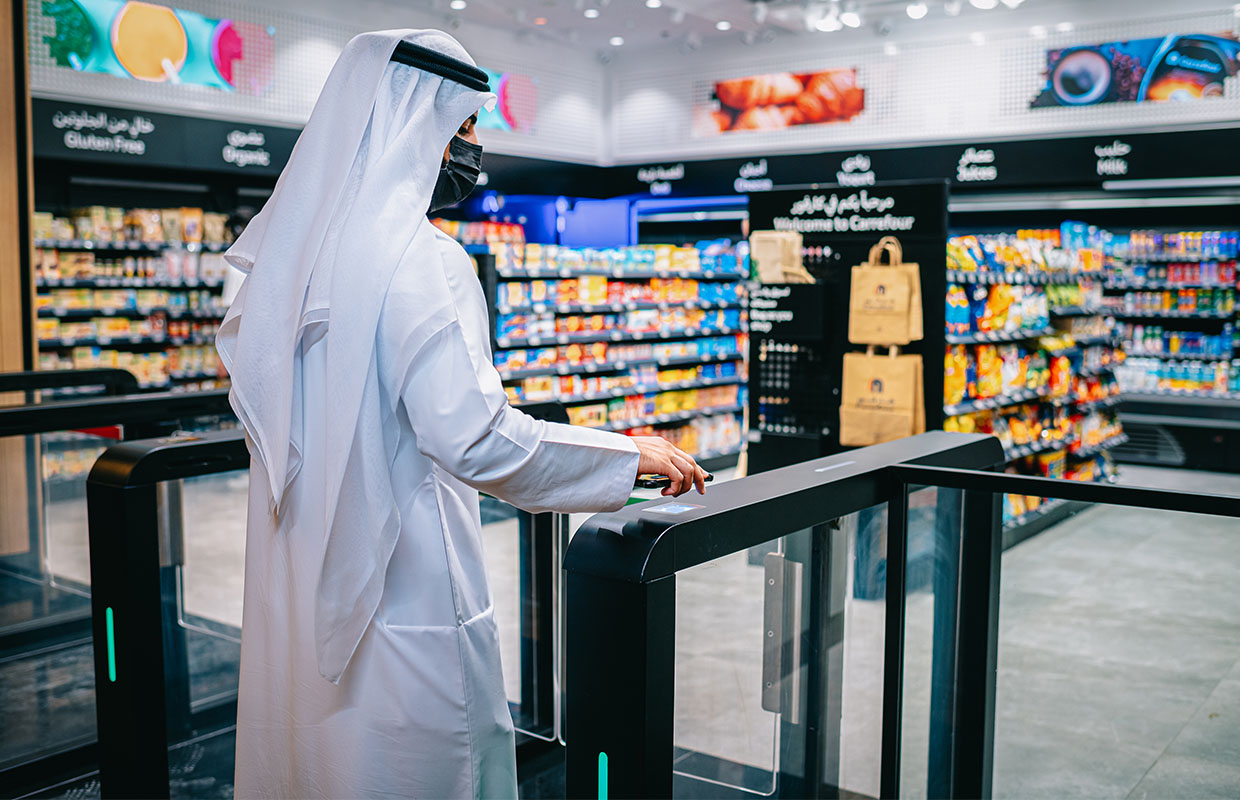News
Carrefour City+ In Mall Of The Emirates Becomes Dubai’s First Contactless Store
Besides the shopping experience, the contactless checkout system also improves the store’s inventory management.

The impact of digital technology on the way we shop has been profound — just consider the fact that we can now order about anything we want online with a few simple clicks and have it shipped from the other side of the world in a few days (if you’re willing to pay for express shipping, of course). Now, shoppers at Carrefour City+ in Mall of the Emirates can simply grab anything they want and leave without going through the traditional checkout process, which, as you probably are personally familiar, can be a painfully slow experience.
“Carrefour City+ has been designed to make life easier by using technology to remove friction and enhance the retail experience,” revealed Hani Weiss, Chief Executive Officer at Majid Al Futtaim Retail. “The store represents a huge leap forwards for retail in the UAE and region as Carrefour continues to innovate to meet the needs of the present whilst anticipating future shopping trends”.

The retail and leisure operator Majid Al Futtaim (MAF) has enabled the first contactless checkout experience in Dubai using artificial intelligence and the current MAF Carrefour App. Here’s how it works in practice:
- A customer enters the store using the MAF Carrefour App.
- The customer can then simply pick any items from the shelves.
- Artificial intelligence identifies each picked item.
- All items are automatically added to a digital shopping basket.
- When the customer walks out of the store, payment is automatically made for the content of the digital shopping basket.
Also Read: Yela Secures Over $2M To Connect Arab Fans & Celebrities Via Video Messages
Carrefour City+ stocks over 1,300 items, including basic food items, ready-to-go meals, and personal hygiene products. Besides the shopping experience, the contactless checkout system also improves the store’s inventory management, ensuring pinpoint accuracy at all times. Does this sound like a shopping experience you’d be interested in?
News
Mamo Completes $3.4M Funding Round To Enhance Fintech Services
The startup will use the influx of cash to expand into Saudi Arabia and across the wider GCC while improving its product offering.

UAE-based fintech Mamo has announced the completion of a $3.4 million funding round that will help the startup extend its market presence and improve its product offering. Investors included 4DX Ventures, the Dubai Future District Fund and Cyfr Capital.
Mamo’s platform offers “payment collection, corporate cards and expense management” to help small and medium-sized businesses consolidate and streamline their operations. With the latest influx of capital, Mamo will further develop its comprehensive suite of services and begin testing its product lines in Saudi Arabia, further extending its footprint across the GCC.
Imad Gharazeddine, co-founder and CEO of Mamo, stated: “We’ve been in the market for a while now and are incredibly proud of what our team has achieved. The holistic and expansive nature of our product offering has helped us continue to grow sustainably. This additional funding will allow us to reach our medium-term goals even faster. The support from new and existing investors is a testament to our strong expertise and the ability to deliver on our customer promise”.
Daniel Marlo, General Partner of lead investor 4DX Ventures, added: “We have immense trust in Imad’s vision, leadership and Mamo’s innovative approach to provide a user-friendly and comprehensive financial solution for SMEs that makes financial management more accessible and efficient. We are proud to partner with them and support their mission”.
Also Read: A Guide To Digital Payment Methods In The Middle East
Amer Fatayer, Managing Director of Dubai Future District Fund’s investment team, also commented: “Mamo’s localized product lines serve as an infrastructure for SME payments and spend management in UAE, a segment that is underserved by the country’s current banking infrastructure. The team has taken a product-first approach to consolidating SMEs’ financial journeys and building a fintech solution deeply embedded in a business’s core operations”.
To date, Mamo has raised around $13 million in investment funding and now boasts a team of 30 people. The company’s intuitive financial services platform has allowed over 1,000 businesses to consolidate their financial operations and significantly reduce payment fees.
-

 News4 weeks ago
News4 weeks agoAmazon Prime Day 2024: Get Ready For 6 Days Of Amazing Deals
-

 News4 weeks ago
News4 weeks agoSamsung Unpacked 2024: What To Expect From The July 10 Event
-

 News4 weeks ago
News4 weeks agoCoursera Report Shows Surge In UAE Interest In AI Upskilling
-

 News4 weeks ago
News4 weeks agoMeet Dubai’s Groundbreaking Smart Robot Delivery Assistant











